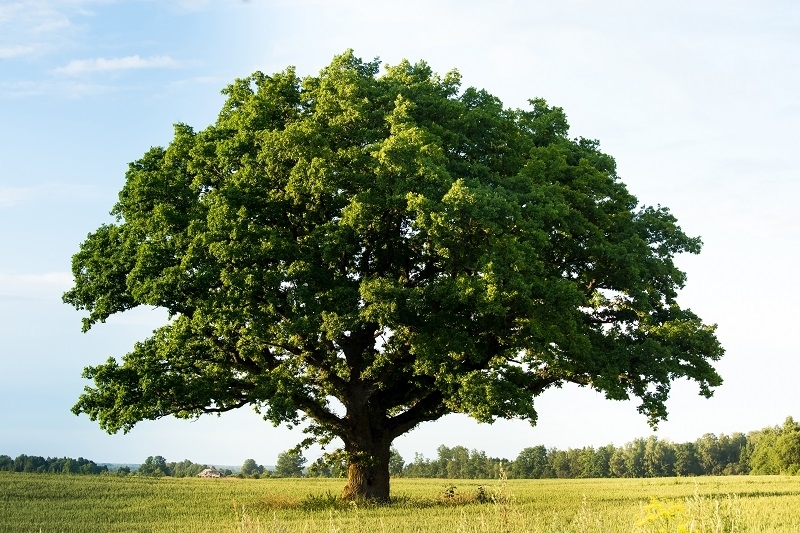The Many Uses of Oak
Published: 07/06/21 By: Mike Bekin
Today, we’re going to take another look at the mighty Oak, but with a focus on a few of its myriad uses.
While we’ve mentioned the general uses of Oak in a previous post, we wanted to take the opportunity to explore three of the most common: sleepers, cladding, and beams.
Oak Sleepers
Also referred to as railroad ties or cross ties, sleepers are a crucial part of railway track construction.
Sleepers are used to ensure the correct spacing, both between each track, and the track’s continual width. This is known as the gauge.
Largely, across Europe and the UK, tropical hardwood short sleepers such as Ekki and Opepe have been replaced by concrete sleepers.
Although sometimes still used in public railways, Oak sleepers offer their own benefits and are very sought after in the landscaping industry where they are usually found in 100x200mm sections and 2 or 2.4m lengths. They are easy to handle and manufacture, offer good insulation against electricity, and their workability allows for them to be used in a variety of situations with ease. They can even be recycled.
Although landscaping sleeper grade is one of the lowest in the industry, oak sleepers can last up to 25 years. This is often attributed to the fact that oak is particularly resistant to rot, resulting in re-usability being less of a problem than chemically treated softwood sleepers.
In the vein of workability, Oak responds well to steam bending, allowing it to easily fit across a winding track or garden design.
Oak Cladding
Whilst softwood is commonly attributed to being a good timber for cladding, primarily for its wide availability, it doesn’t really hold up in terms of the primary function of cladding: durability – especially when compared to naturally durable timbers such as European Oak.
Cladding’s purpose is to provide protection from the elements whilst also providing a layer of insulation to a home. Hardwoods, such as oak, excel at this.
English and French Oak have a good density of 720 kg/m3, only decreasing to around 672 kg/m3 once the wood has been weathered. It is also rated as a durability class two, which means it can last about 25 years above ground contact without any treatment.
All of this in one package, which is why Oak is so popular in the building sector, and why it should be just as popular for your cladding.
Oak cladding combines all of this – with its great rot and weather resistance – and a timeless look and feel that is nothing short of enviable.
By sticking with the heartwood as your choice, you can also avoid the extra work of treating the sapwood prior to use – although it’s always important to seal the ends of each board.
Oak Beams
Oak beams are one of the most common applications for Oak. Construction-based oak can be graded to a strength class of D30, making it the perfect wood for strong beams.
Structurally speaking, Oak is incredible. This is because as time goes by, Oak gets stiffer. This enables Oak beams to solidify their place in the construction, guaranteeing a structurally sound building.
With its resistance to insect attacks, density, strength class, and durability, Oak is one of the most resilient, safe, and affordable beams you can choose – no wonder it is found from the oldest cathedrals to the nicest country homes and pubs.
If you require Oak timber, for any of the aforementioned reasons or perhaps others, give us a call on 0345 638 1340 – we would be happy to help!
Image: Alexander Tolstykh / Shutterstock.com
